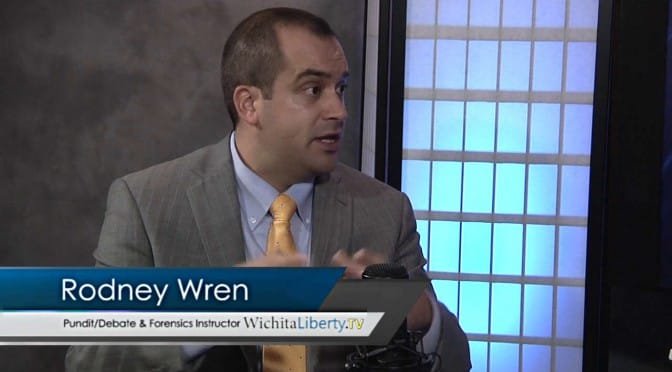There’s no need for Kansas state government to exaggerate the value of agriculture to the Kansas economy.
A recent press release from the office of Kansas Governor Sam Brownback quoted the governor thusly: “Agriculture is our largest economic driver, bringing more than $63 billion into the Kansas economy.” (Governor Sam Brownback visits will reinforce the importance of Kansas agriculture, August 17, 2015.)
$63 billion is a lot of output. It’s about 43 percent of the Kansas economy. A document supplied by the Kansas Department of Agriculture provides more detail: “As shown in the above table, agriculture, food, and food processing supports 229,934.1 jobs, or 12% of the entire workforce in the county [sic]. These industries provide a total economic contribution of approximately $62.8 billion, roughly 43% of Gross Region Product (GRP).” (Estimated Economic Impact of Agriculture, Food, and Food Processing Sectors, May 7, 2015.)
The document explains how such a large number is obtained. It includes three components, explained here: “Direct, indirect, and induced effects sum together to estimate the total economic contribution in the state. Direct effects capture the contribution from agricultural and food products. Indirect effects capture the economic benefit from farms and agricultural businesses purchasing inputs from supporting industries within the state. Induced effects capture the benefits created when employees of farms, agricultural businesses, and the supporting industries spend their wages on goods and services within the state.”
This method of reckoning economic impact is from a model called IMPLAN. It is a proprietary system with methodology and assumptions not open to inspection. It often used by those who are asking government for money or tax breaks. IMPLAN comes up with some real whoppers as to how important an industry is to the economy. When shown these figures, government officials are usually swayed to grant incentives.
There’s a problem, however. Agriculture cannot possibly be responsible for 43 percent of Kansas GDP. The U.S. Bureau of Economic Analysis (BEA) has figures for each state showing the contribution to GDP for industry categories. I’ve gathered the data and calculated percentages for each industry. As you can see, the category “Agriculture, forestry, fishing, and hunting” accounts for $8,136 million or 5.5 percent of Kansas GDP. There are seven other industry categories that rank above agriculture.

5.5 percent is a long way from the governor’s claim of 43 percent. It is true that the title of the paper is “Estimated Economic Impact of Agriculture, Food, and Food Processing Sectors.” So consider these industry subsectors:
Food and beverage and tobacco products manufacturing of $3,463 million (2013 value; 2104 not available)
Food services and drinking places $2,776 million (Also 2013 value)
If we add these to agriculture, we have production worth 9.8 percent of Kansas GDP. This is being overly generous to agriculture. It counts all bars and restaurants as part of the agriculture industry, something that makes no sense.
So how do we take these numbers and pump them up to 43 percent? IMPLAN, that’s how. It’s true that when an industry causes economic activity to occur, it spawns other economic activity. These are the indirect and induced effects that IMPLAN produces. But these numbers are hugely inflated. And when we take all industries, economic activity is counted more than once.
Recall there are seven industry categories ranking above agriculture. When it suits its needs, each of these uses IMPLAN to boost its importance to the state. Consider manufacturing, which at 13.1 percent of GDP is the third-largest industry in Kansas. When manufacturing companies appeal to state or local government for subsidies, they use IMPLAN or related mechanisms to inflate their importance. Almost everyone does this. It’s standard procedure.
Except: When everyone claims the same indirect and induced economic activity, such analysis becomes meaningless. If we added up the IMPLAN-calculated value of each industry to the Kansas economy, we’d end up with a value several times larger than the actual value.
This is what the Kansas Department of Agriculture and Governor Sam Brownback have done. We expect this behavior from companies or local economic development agencies when they appeal for economic development incentives. They need to inflate their importance to gullible government bureaucrats and elected officials. But Governor Brownback doesn’t need to do this, and neither does the Kansas Department of Agriculture. From them, all we want is the truth, and nothing more.


 An example used in the article is Toyota’s decision to move its North American headquarters to Plano. Toyota received incentives in conjunction. The article quotes Jim Lentz, CEO of Toyota North America, as saying “The incentives are really important.” But that hasn’t always been the line from Toyota.
An example used in the article is Toyota’s decision to move its North American headquarters to Plano. Toyota received incentives in conjunction. The article quotes Jim Lentz, CEO of Toyota North America, as saying “The incentives are really important.” But that hasn’t always been the line from Toyota.

















